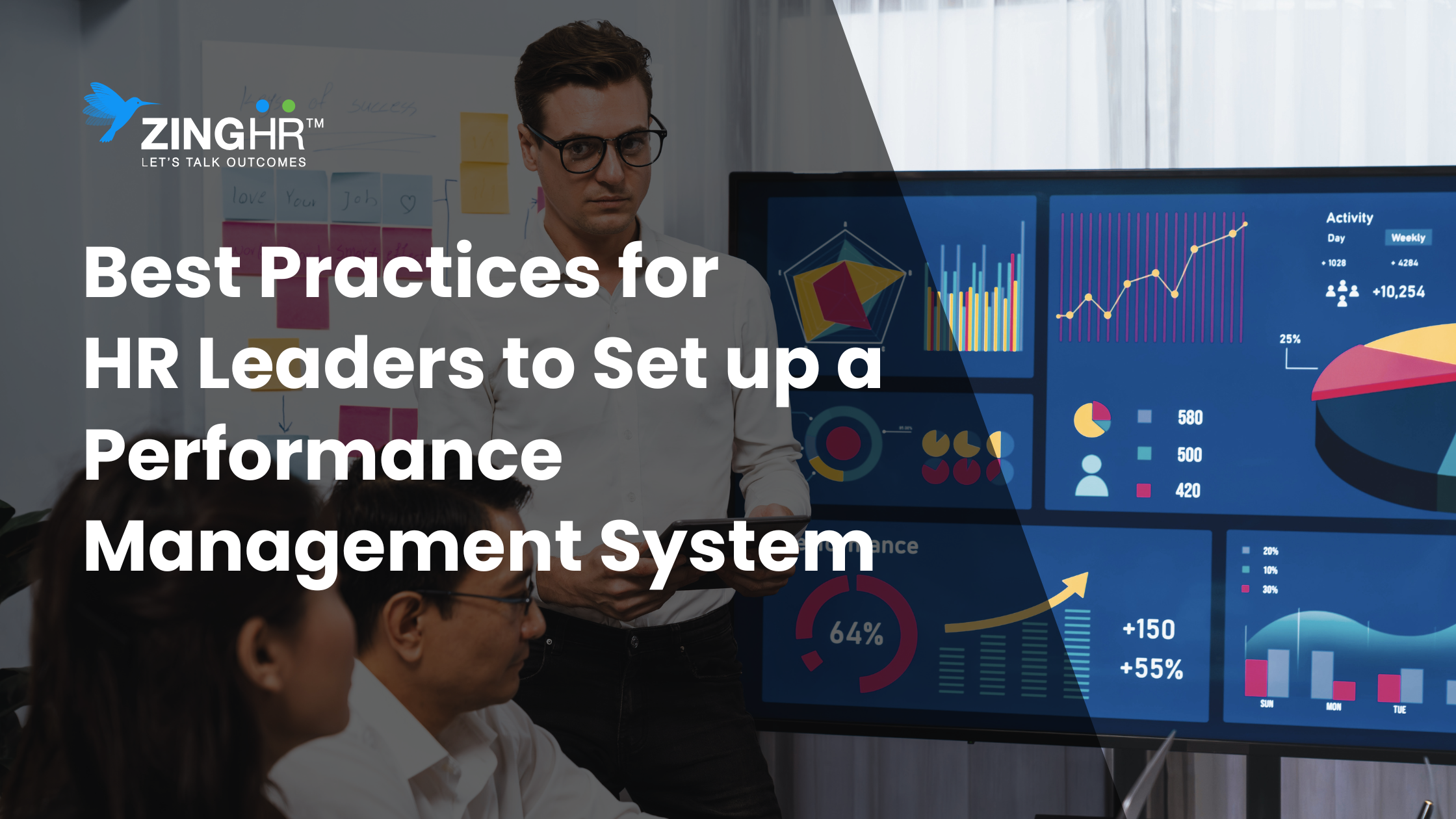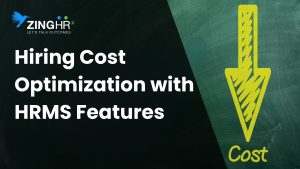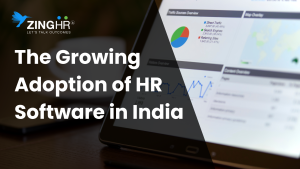On This Page
Imagine you’ve hired a lot of talented people to work in your organization. They’re skilled, they’re passionate, and they’re hungry to succeed. They’ve been working hard for weeks, and the results are still average. They’re just working hard without any clarity or a clear pathway to success. This confusion affects the results of their work, and it’s due to a lack of a clear performance framework for them to follow. And this is where a Performance Management System (PMS) comes into action.
A Performance Management System isn’t just software, it’s a structured process that connects business goals with employee performance. To simplify, it makes sure that everyone knows:
- Goals: What are they working toward?
- KPIs: How will their progress be measured?
- Check-ins and Evaluation: When and how they’ll get feedback?
- Development Plans: How can they grow?
When done right, a Performance Management System can:
- Improve focus and motivation.
- Help managers make fairer and data-backed decisions.
- Identify future leaders for succession planning.
- Strengthen company culture through transparency and accountability.
But the problem is, many companies either don’t have a Performance Management System at all or rely on an outdated once-a-year review system that doesn’t do them any good.
But we’ve got some good news for you, setting up a modern, AI-driven PMS is easier than you think, especially if you follow a clear, step-by-step process like we’re about to cover in this blog. By the end of the blog, you’ll know exactly how to set up a Performance Management System, how to set SMART Goals, and how to use tools like ZingHR AI to make the process faster, fairer, and effective.
Key Takeaways from the Blog
Here’s what you’ll learn today:
- What a Performance Management System is and why it’s essential for modern organizations.
- The five stages of the performance process.
- How to set goals using SMART Goals, Balanced Scorecard, and KRA Method.
- How Goal Approval keeps teams aligned.
- How continuous check-ins are more effective than once-a-year reviews.
- How Evaluation & Calibration create fairness across teams.
- The role of HR analytics in improving performance.
- How performance management in HRM ties into retention and employee growth.
The Performance Management Process
Performance Management is not a one-time event, it’s a continuous cycle.
- Goal Setting: Define clear expectations.
- Goal Approval: Align goals with company priorities.
- Task and Continuous Check-ins: Track progress in real time.
- Evaluations: Review performance and give structured feedback.
- Calibration: Ensure ratings are consistent across teams.
The cycle never stops. The moment one performance cycle ends, you should start the next. Because priorities change, markets shift, and your Performance Management System should evolve with them.
Set Up a Performance Management System in 6 Steps
Setting up a Performance Management System from scratch might be overwhelming for some people. However, with ZingHR’s Performance Management Strategies, the process becomes quick and easy. Let’s take a look at it, one step at a time.
1. Goals Setting – The Foundation of Performance Management
Setting goals is the first and one of the most important steps in this process. Because if you don’t set the right goals, everything else in your Performance Management system will fall apart.
Why does goal-setting matter?
Because when people have clear and measurable goals:
- They understand exactly what’s expected of them.
- Goals act as a roadmap, guiding individuals to stay focused on their priorities.
- Goals provide a motivation, sense of purpose and reason to achieve success because there’s a clear pathway for them to follow.
Here are the three proven goal-setting methods:
- SMART Goals – Specific, Measurable, Achievable, Relevant, Time-bound
There are goals, then there are SMART goals. What’s the difference? Let’s say the goal is, “Increase sales”. Then the SMART goal would say, “Increase Q4 sales revenue by 20% compared to Q3”.
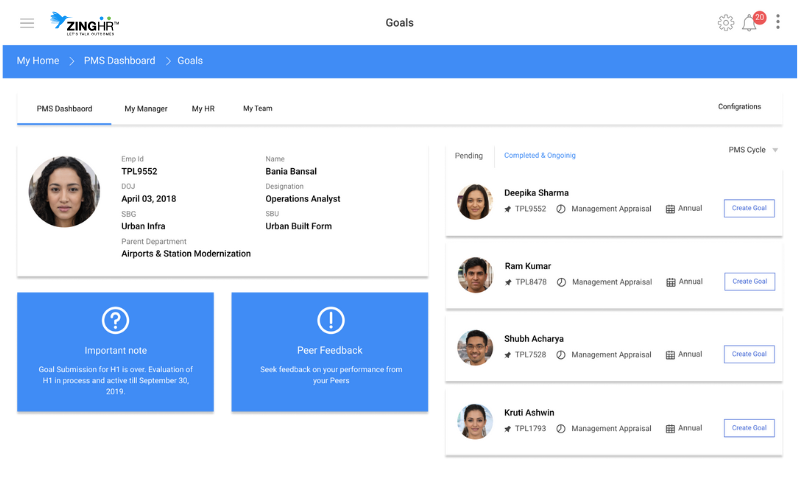
The difference is the clarity of goals. Now the employees know what the actual target is, and they can plan their work towards achieving that target accordingly.
- Balanced Scorecard Method
This method focuses on four of the following areas:
Financial: Measures profitability, revenue growth, cost control, and return on investment.
Customer: Focuses on customer satisfaction, retention, acquisition, and brand perception.
Internal Processes: Evaluates efficiency, quality, innovation, and operational improvements
Learning & Growth: Assesses employee skills, training, knowledge management, and organizational culture for long-term growth.
Example:
A marketing manager has a financial goal (Increasing ROI on campaigns), a customer goal (Increasing brand awareness across markets), an internal process goal (Improving ad review turnaround time for faster output), and a learning goal (Complete a leadership course).
These four goals help the employees have balanced goals, and their performance can be evaluated on the basis of the balanced scorecard.
- KRA Method (Key Result Areas)
This method focuses on the broad areas of responsibilities tied to a role and their eventual outcome.
Example:
The KRA method for an HR Manager: Recruitment efficiency, training completion rate, employee engagement, etc.
These are the Key Result Areas on which the performance of an HR Manager will be evaluated.
How ZingHR helps you:
- Allows you to create and assign goals using pre-set templates.
- Links goals directly to KPIs for accurate measurement.
- Makes goal-setting collaborative, letting managers and employees refine it together.
2. Goals Approval – Making Sure Everyone’s Aiming in the Same Direction
Setting goals is the foundation of your Performance Management System. But here’s the thing, if those goals don’t align with the company’s bigger vision, it’s like rowing the same boat in two different directions. Simply put, you might be working hard, but you won’t get anywhere near where you exactly want to be.
Why is it important?
- It prevents the team from chasing goals that don’t match the business objective.
- Goals make sure that time, effort, and resources go into the right things.
- They encourage open conversations between managers and employees.
Example:
If a team member sets a goal to “attend 3 conferences”, a manager may approve only two and add a measurable outcome such as, “generate at least 15 qualified leads from each event”. This way, the goal isn’t just an activity, it’s directly tied to business impact.
How does ZingHR make it easy?
- Multi-level approval workflows, so that multiple managers can review the goals before they’re finalised.
- Goal visibility for both employees and managers. This helps maintain transparency and avoids confusion.
- Instant notifications for when the goal is approved, modified, or rejected.
3. Task & Continuous Check-ins – Tracking in Real Time
The old-school method of performance management used to work like, set a goal at the start of the year, meet after 12 months, and see what happened. The problem? By the time you realize there’s something off-track, it’s already too late to fix it.
This doesn’t happen with continuous check-ins. They’re like regular health checkups for your goals, and if there’s an issue, these check-ins raise the flags immediately, giving you enough time to fix the issue.
Why do continuous check-ins work?
- They give you real-time progress updates instead of waiting for months.
- This allows you to quickly fix the problems before it’s too late.
- It keeps the employees more engaged and motivated because they know that their work is being noticed.
Example:
A salesperson has a quarterly goal of closing Rs. 10 Lakh in sales. Halfway through the quarter, a check-in shows that they’re only at Rs. 3.75 Lakh. Now, instead of waiting for the quarter to end and then pointing out the problem, the manager can step in right away to adjust strategies, offer extra leads, or even provide sales training.
How does ZingHR support check-ins?
- Progress tracking dashboards so that the managers can see the updates instantly.
- “Check-in history” for transparency, ensuring everyone knows what’s been discussed before.
- Space for notes and feedback after each update, so actionable things are never forgotten.
4. Evaluation – Reviewing Performance and Growth
People generally think of evaluations just as numbers on a piece of paper that score their work and performance. It shouldn’t be that way.
A good evaluation is a conversation, a chance to celebrate wins, address challenges, and create a plan for growth.
Here’s what great evaluations include:
- Manager Evaluation: Based on both numbers (KPIs, targets, etc.) and behaviour (Teamwork, leadership, and problem-solving).
- Self-evaluation: Giving employees a voice in their own review. So that they take ownership in their own progress and spot strengths and weaknesses that others might miss.
- Growth potential check: Identifying the people who could take on bigger roles or leadership positions at the organization in the future.
- Development needs: Creating targeted training plans to help the employees grow and improve their skills.
Example:
An engineer might rate themselves high on technical skills due to their qualifications, but admit that they’re nervous in client meetings. That’s a valuable insight and an area that can be worked upon and improved with the right training. The manager’s role here becomes clear, i.e. set up communication training, give the employee smaller presentation opportunities in the beginning, and build their confidence gradually.
How does ZingHR make it easier?
- Structured templates that make sure evaluations are consistent and nothing important gets missed.
- AI-based potential assessments that help sort future leaders early.
- Development needs tracking so training programs are linked directly to the evaluation findings, turning feedback into real improvement.
5. Calibration – Keeping Ratings Fair and Consistent
Here’s the thing about performance reviews, no two managers think exactly the same way. Some are naturally generous with their ratings, while others are a bit strict. That’s human nature. But if you leave it completely to personal judgment, you end up with inconsistencies that feel unfair to the employees. Calibration fixes that by keeping things fair for all.
Example:
If two employees in different departments achieve the same level of performance, they should get the same rating. Calibration makes sure personal biases don’t get in the way of that fairness.
ZingHR Calibration Tools:
- Bell Curve Distribution: Keeps ratings balanced across teams.
- Moderation Meetings: Managers align before finalising scores.
- 9-Box Grid: Plots employees by performance and potential for succession planning.
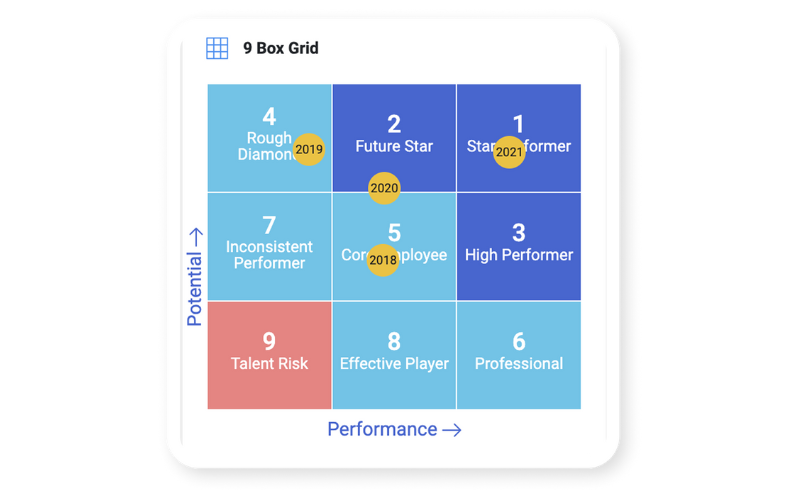
6. HR Analytics & Performance Reporting – Turning Data into Decisions
This is where performance management goes from being just “HR work” to being a real growth driver for the business.
Example:
Analytics might reveal that top-performing salespeople consistently close deals faster when they’ve attended a certain training program, helping HR invest in the right learning resources.
With ZingHR AI, you can:
- Identify top performers for future leadership roles within the organization.
- Spot skill gaps and recommend the right training programs for the employees.
- Track performance trends across teams and departments.
- Predict future talent needs based on business growth and employee movement.
Wrap Up
If there’s one thing that you need to remember about setting up a Performance Management System, it’s that it isn’t about ticking boxes or running through with HR formalities.
It’s about creating a workplace where people know what’s expected of them, feel supported, and have a clear path to grow. When an employee feels these things, something amazing happens. They stop just working for a salary, they start working with purpose. They know their work matters, and they see how it contributes to the bigger picture.
A good Performance Management System doesn’t just improve performance, it improves trust, communication, and culture. It helps managers make better decisions, it gives employees ownership of their journey, and it ensures the whole company moves in the same direction. Still, the reality is sobering: According to Gallup reports that only Two Percent of Fortune 500 CHROs strongly agree their performance management systems truly inspire employees to improve.
And the best part? With tools like ZingHR’s AI-powered Performance Management System, you don’t have to do all this manually. The process becomes simple, transparent, and data-driven, so you can focus more on the growth of your people and the organization.
So, what are you waiting for? Now’s the time to set up a Performance Management System that helps you succeed in today’s fast-changing world. Because when your people grow, your business grows. It’s a win for everyone.
Frequently Asked Questions (FAQs)
1. What are SMART Goals?
SMART Stands for Specific, Measurable, Achievable, Relevant, and Time-bound. This approach helps ensure that goals are well-defined, trackable, realistic, and focused.
2. What are the 5 Stages of Performance Management?
Goal Setting, Goal Approval, Continuous Check-ins, Evaluation, and Calibration.
3. What are KRA and KPI?
KRA (Key Result Areas) = Broad job responsibilities, KPI (Key Performance Indicators) = Measurable results tied to those responsibilities.
4. What are Performance Management Strategies?
Tactics like continuous feedback, skill-based training, AI analytics, and calibration to improve performance outcomes.

